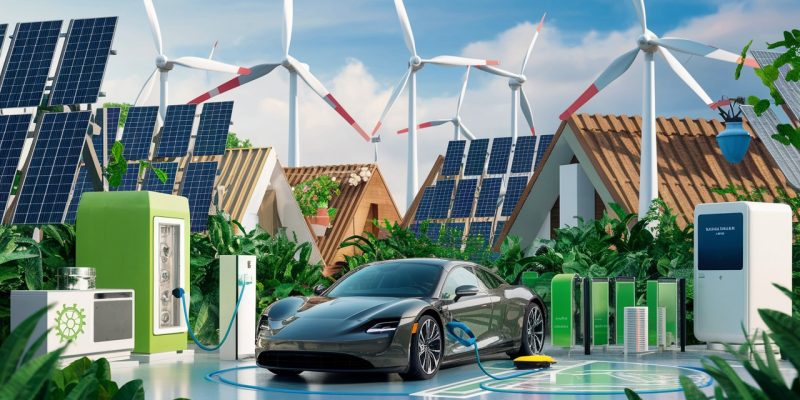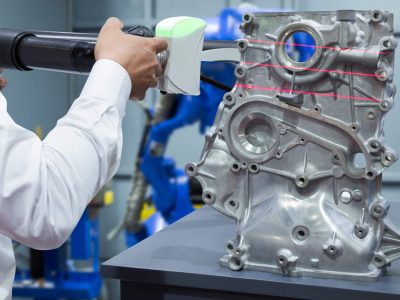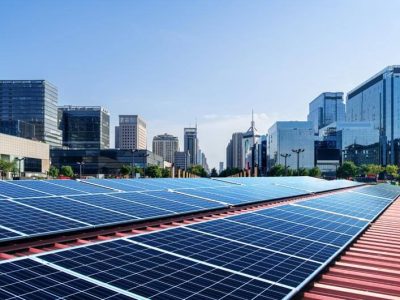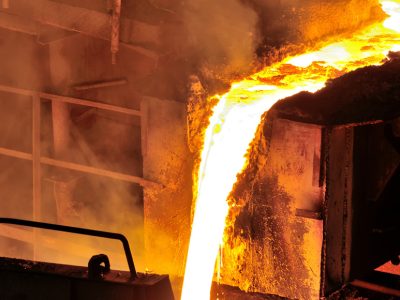Renewable energy technology continues to evolve rapidly, offering sustainable solutions to the world’s growing energy needs while mitigating the impact of climate change.
From advancements in solar and wind power to breakthroughs in energy storage and grid integration, this blog explores the latest innovations shaping the future of renewable energy.
Solar Power: Harnessing the Sun’s Energy
Next-Generation Solar Panels
Innovations in solar panel technology are making solar energy more efficient and affordable than ever before. Perovskite solar cells, for example, offer higher conversion efficiencies and lower manufacturing costs compared to traditional silicon-based panels.
Additionally, bifacia kalyan panel chart solar panels, which capture sunlight from both sides, increase energy generation and can be installed in a variety of settings, including rooftops and solar farms.
Solar Tracking Systems
Solar tracking systems are another innovation enhancing the performance of solar installations.
These systems adjust the angle of solar panels throughout the day to maximize exposure to sunlight, increasing energy production by up to 25%.
Advanced tracking algorithms and sensors ensure optimal positioning, even in changing weather conditions, further improving efficiency.
Building-Integrated Photovoltaics (BIPV)
Building-integrated photovoltaics (BIPV) integrate solar panels directly into building materials such as windows, facades, and roofing tiles. This seamless integration not only generates clean energy but also enhances the aesthetic appeal and functionality of buildings.
BIPV systems are gaining popularity in commercial and residential construction projects, offering a sustainable alternative to traditional building materials.
Wind Power: Tapping into Nature’s Forces
Offshore Wind Farms
Offshore wind farms are becoming increasingly popular due to their abundant wind resources and proximity to coastal population centers.
Innovations in turbine design, such as larger rotor diameters and floating platforms, are enabling the development of larger and more efficient offshore wind installations.
These projects have the potential to deliver significant amounts of clean energy while minimizing visual and environmental impacts on land.
Vertical Axis Wind Turbines
Vertical axis wind turbines (VAWTs) represent a promising innovation in wind power technology. Unlike traditional horizontal axis turbines, VAWTs are omnidirectional and can capture wind from any direction,
making them suitable for urban environments and areas with turbulent wind patterns. Their compact size and aesthetic appeal make VAWTs a viable option for decentralized energy generation in densely populated areas.
Airborne Wind Energy Systems (AWES)
Airborne wind energy systems (AWES) harness wind energy using tethered airborne devices such as kites, gliders, or drones.
These systems operate at higher altitudes where winds are stronger and more consistent, increasing energy yield compared to traditional wind turbines.
AWES offer a flexible and cost-effective solution for generating renewable energy in remote or offshore locations, where conventional wind turbines may be impractical.
Energy Storage: Storing Power for the Future
Battery Technology Advancements
Advancements in battery technology are revolutionizing energy storage, enabling renewable energy sources like solar and wind to provide reliable power even when the sun isn’t shining or the wind isn’t blowing.
Lithium-ion batteries, with their high energy density and fast charging capabilities, dominate the market, but emerging technologies such as solid-state batteries and flow batteries show promise for further improving performance and reducing costs.
Read Also: How Technology is Revolutionizing Healthcare and Medicine
Pumped Hydro Storage
Pumped hydro storage is a mature and proven technology for grid-scale energy storage.
It involves using surplus electricity to pump water to a higher elevation reservoir during times of low demand, then releasing the water through turbines to generate electricity when demand is high.
Innovations in pumped hydro storage, such as advanced turbine designs and underground reservoirs, are making this technology more flexible and cost-effective.
Grid Integration: Balancing Supply and Demand
Smart Grid Technologies
Smart grid technologies are revolutionizing the way electricity is generated, transmitted, and consumed.
Advanced sensors, communication networks, and control systems enable real-time monitoring and management of energy flows, optimizing grid operations and improving reliability.
Smart grids also support the integration of renewable energy sources by enabling dynamic pricing, demand response programs, and grid-scale energy storage.
Virtual Power Plants
Virtual power plants (VPPs) are emerging as a scalable solution for integrating distributed energy resources (DERs) into the grid.
By aggregating and coordinating the output of solar panels, wind turbines, batteries, and other DERs, VPPs can provide grid stability services, reduce peak demand, and support renewable energy penetration.
Innovations in VPP software and hardware are making these systems more efficient and responsive to grid needs.
Energy Storage: Storing Power for the Future
Battery Technology Advancements
Advancements in battery technology are revolutionizing energy storage, enabling renewable energy sources like solar and wind to provide reliable power even when the sun isn’t shining or the wind isn’t blowing.
Lithium-ion batteries, with their high energy density and fast charging capabilities, dominate the market, but emerging technologies such as solid-state batteries and flow batteries show promise for further improving performance and reducing costs.
Pumped Hydro Storage
Pumped hydro storage is a mature and proven technology for grid-scale energy storage.
It involves using surplus electricity to pump water to a higher elevation reservoir during times of low demand, then releasing the water through turbines to generate electricity when demand is high.
Innovations in pumped hydro storage, such as advanced turbine designs and underground reservoirs, are making this technology more flexible and cost-effective.
Thermal Energy Storage
Thermal energy storage systems store heat energy in materials such as molten salt, concrete, or phase-change materials, which can be released later to generate electricity or provide heating and cooling.
These systems are particularly well-suited for integrating renewable energy sources like concentrated solar power (CSP) into the grid, allowing for dispatchable power generation and improved grid stability.
Conclusion
The latest innovations in renewable energy technology are driving a fundamental shift towards a more sustainable and resilient energy future.
From advancements in solar and wind power to breakthroughs in energy storage and grid integration, these innovations are making clean energy more accessible, affordable, and reliable than ever before.
By harnessing the power of nature and leveraging cutting-edge technology, we have the opportunity to accelerate the transition to a low-carbon economy and mitigate the impacts of climate change for future generations.
Read More: India’s Industrial Valve Casting Revolution: Trends, Opportunities, and Growth







Comments